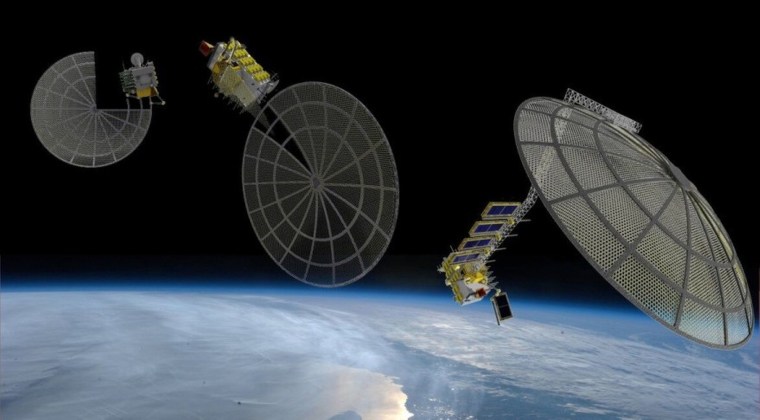The nascent off-Earth manufacturing industry is getting set to take its next big steps.
Made In Space, the California-based company that owns and operates the commercial 3-D printer aboard the International Space Station (ISS), is developing new technology, called Archinaut, that's designed to enable the assembly of large structures in the final frontier.
"The real difference maker for this technology is in the area of being able to put stuff up that you can't origami fold up [for launch], or that would be really, really difficult to do with a traditional deployable" system, Made In Space CEO Andrew Rush told Space.com last month.
Building structures off Earth would also allow them "to be space-optimized," Rush said, "rather than engineered to survive launch."
Related: 3-D Printing in Space: A Photo Gallery
The Archinaut concept integrates a 3-D-printer and flexible robotic arms into a single spacecraft capable of manufacturing parts and putting them together in space. In addition to building structures anew, Archinaut could help repair or upgrade existing satellites, Rush said.
Made In Space has been working on the project for about six months. NASA selected the idea for funding in November 2015 via a "tipping point technologies" solicitation, and the company (along with partners Northrop Grumman and Oceaneering Space Systems) got on the $20 million contract roughly a year later, Rush said.
Made In Space's work on Archinaut currently focuses on figuring out how best to manufacture "extended structures" in the space environment, Rush said. This research involves testing at NASA's Ames Research Center in Moffett Field, California — Made In Space's next-door neighbor — and analyzing samples created by the ISS commercial 3-D printer, which is called the Additive Manufacturing Facility (AMF).
The next step will involve adding the robotic-arms component into the mix, Rush said. All of this is part of the project's first phase, which will last a total of 18 months.
After such work is complete, Made In Space and its partners aim to launch an Archinaut demonstration mission to Earth orbit. That flight had been pegged for 2018, but the timeline might end up being pushed back a bit, Rush said.
"For the Archinaut development program through NASA, that's kind of dependent on Phase 2, which is to be announced," he said.
The demonstration mission will likely build a space structure a few meters across, Rush added. There should be bigger things to come, however.
"Where this gets really interesting is, tens [of meters] to 100 meters plus," he said. "And that's what we're angling toward."
For example, Archinaut could potentially enable the construction of gigantic space telescopes, Rush said: The technology could manufacture some parts in orbit and integrate them with others, such as mirror segments, that were launched from the ground. (At the moment, entire space telescopes must be folded up to fit inside a rocket's nose cone, limiting their maximum size.)
"That's what we think is the attainable future that Archinaut enables," Rush said.
NASA isn't the only organization interested in Archinaut. Rush said that Made In Space is also working with a commercial customer on an application for the technology and will turn over some hardware to this customer (which he declined to name) at the end of this summer.
Made In Space is also negotiating with a half-dozen other potential customers — some of them government entities, others in the private sector — on the possible use of Archinaut tech, Rush said.
Related: Here's Why Buzz Aldrin Wants to Retire the Space Station
Made In Space partnered with NASA to build the first-ever 3-D printer aboard the ISS, which reached the orbiting lab in September 2014. NASA owns that printer. But Made In Space owns and operates the AMF, a second-generation machine that arrived at the ISS in March 2016 and prints out parts for a variety of customers.
The company plans to develop Archinaut tech on a similar path, from demonstration mission to a series of increasingly capable, commercially operating machines, Rush said.
"Visions of what this could do have been with us for a long time," he said. "We want to do good work, and we want to learn from it."
Follow Mike Wall on Twitter @michaeldwall and Google+. Follow us @Spacedotcom, Facebook or Google+. Originally published on Space.com.
